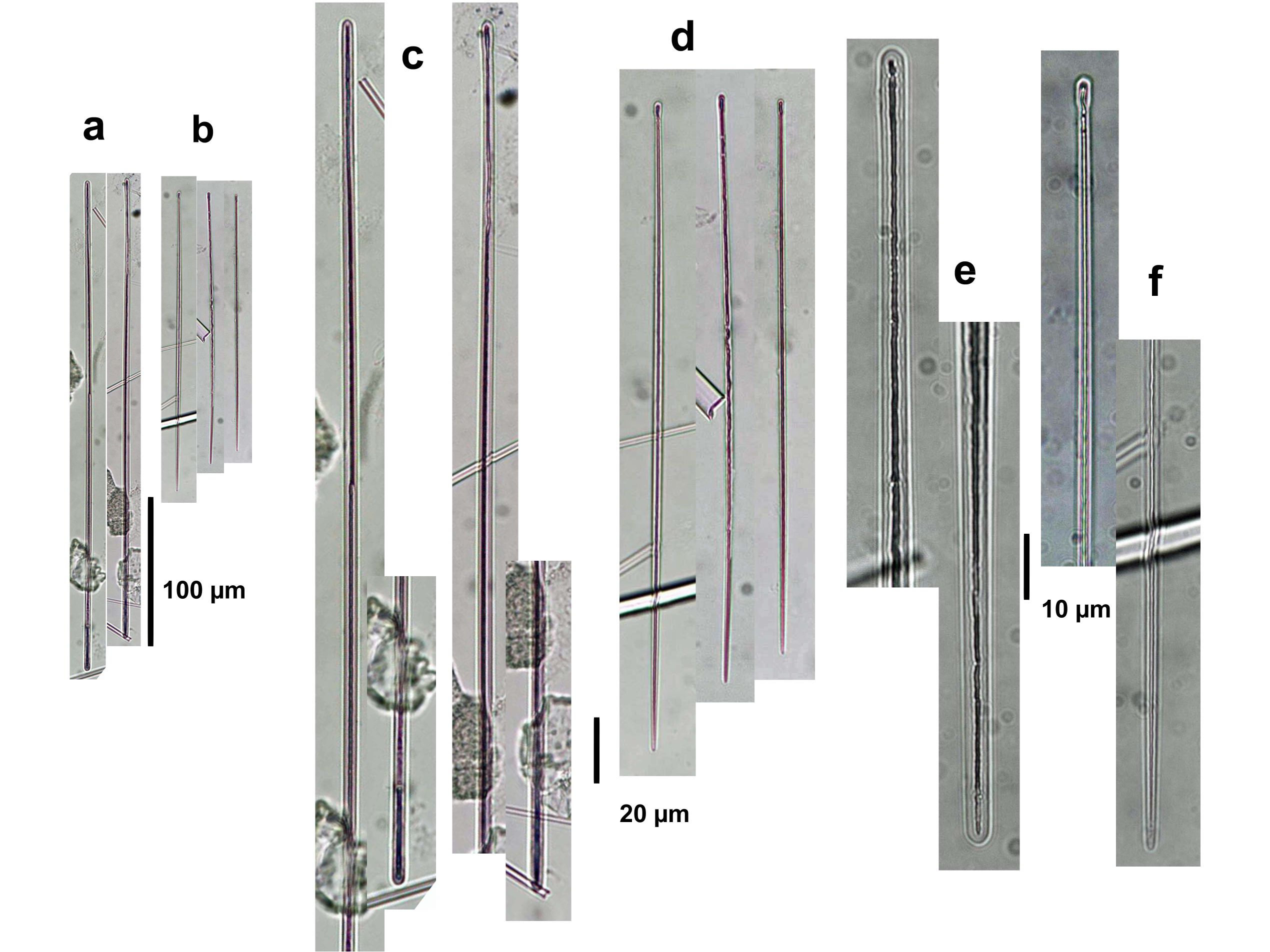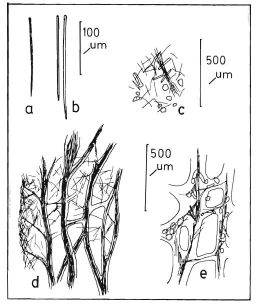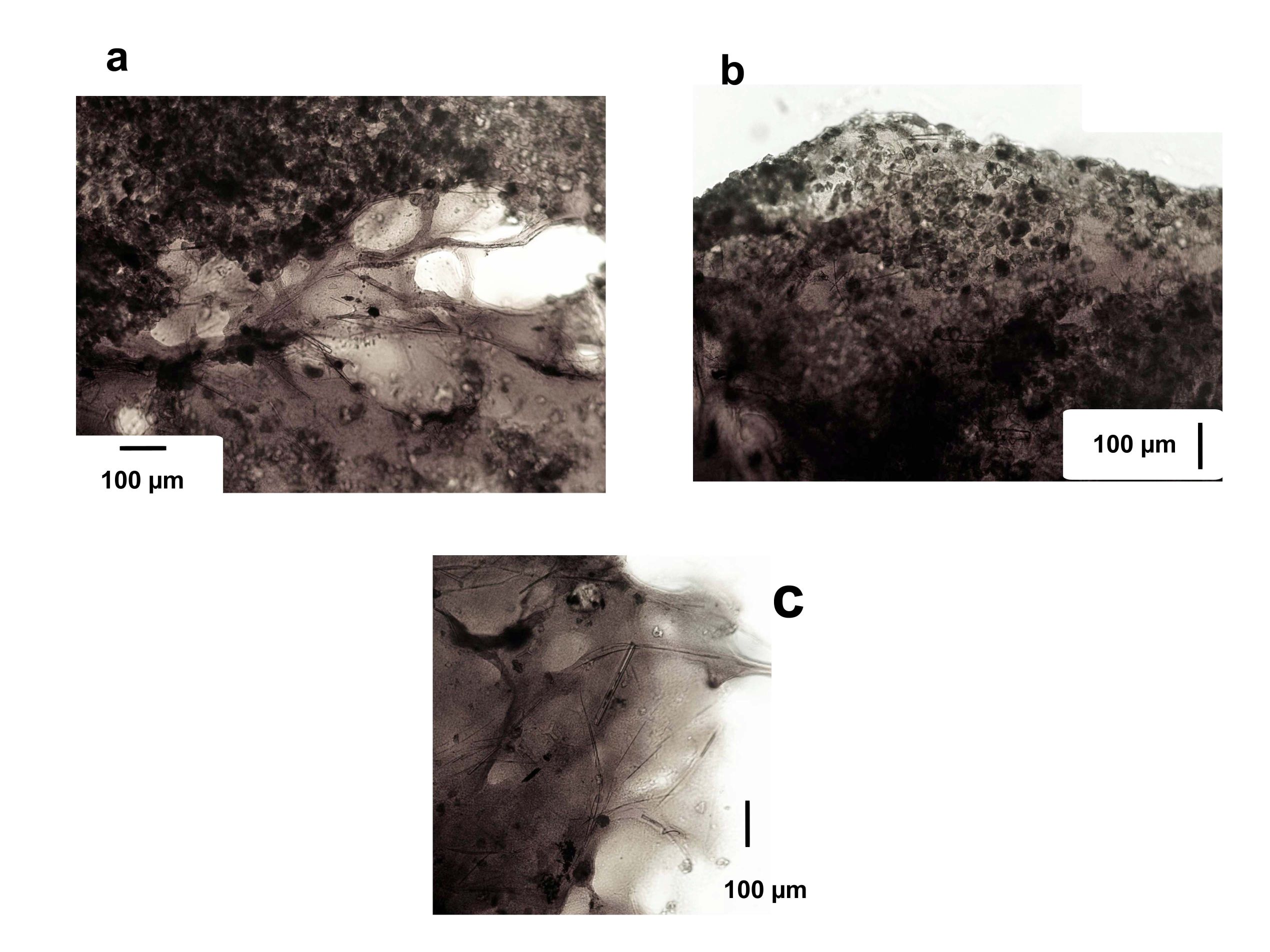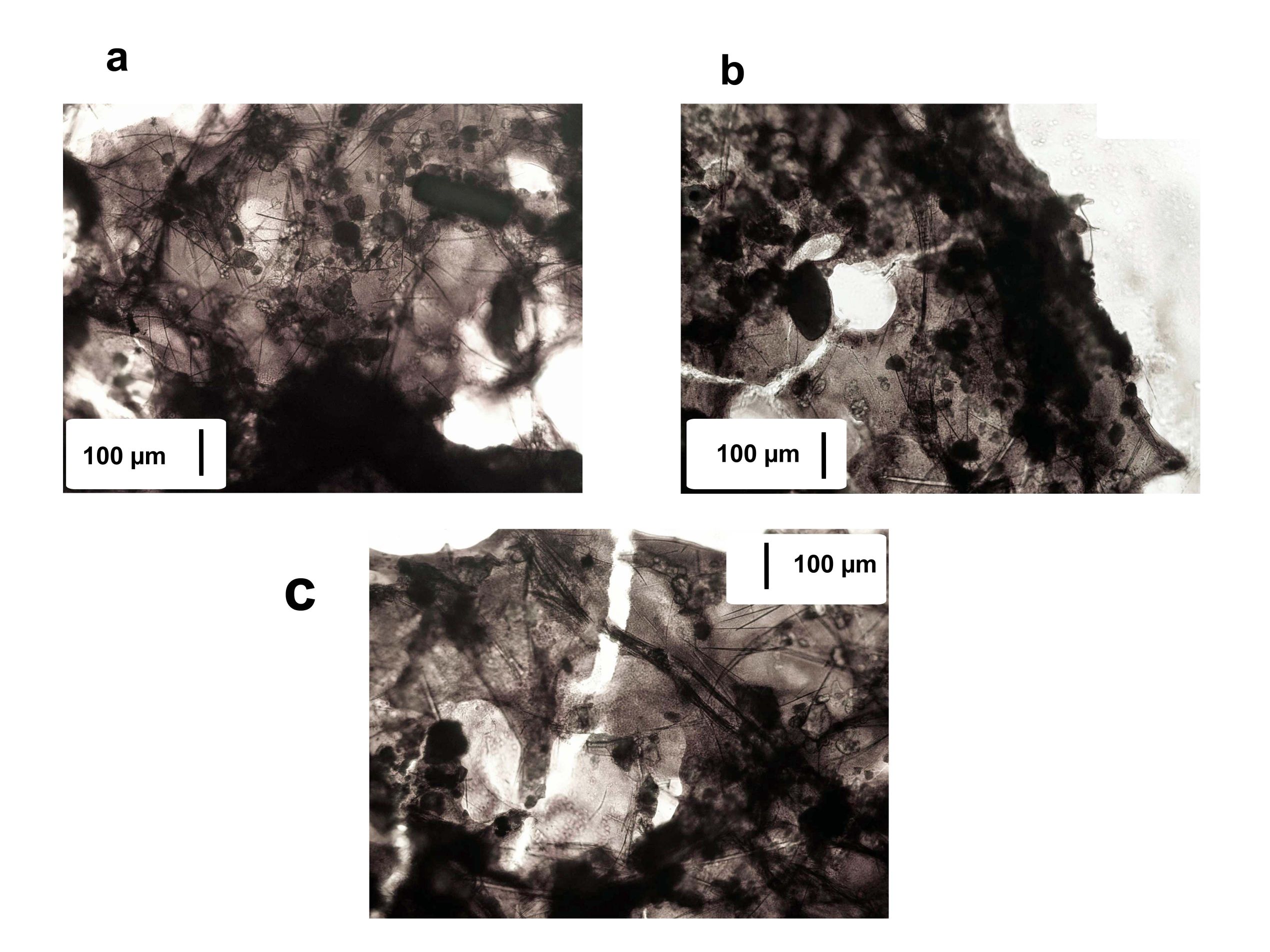the Sponge Guide - www.spongeguide.org
Observed Characteristics:
gray
green
brown
branching
bushy
encrusting
soft
tough
Bahamas
Belize
Colombia
Martinique
Species Description and Notes
Description: Thin encrustations, about 1-3 mm thick, irregularly extended over the substratum for up to 50 cm or more, often overgrowing other sponges, sometimes evenly encrusting, but more often riddled with many erect processes and tangled cylindrical branchelets with rounded ends, which when fused make the sponge turf-like or massive. Often specimens are irregular in outline or have internal empty patches. Surface of the tissue is smooth, looking porous. Color dark olive green, internally and externally, sometimes grayish, produced by endosymbiotic round cyanobacteria (Aphanocapsa raspaigella-like, Díaz et al., 2007) which occupy up to 50 % of the tissue (Rützler, 1981). Consistency soft, easily torn, the branchelets collapse out of the water. Skeleton is a vague and irregular reticulation of spongin fibers, 20-50 µm wide, clean or cored by one to few spicules forming 10-40 µm-wide tracts. There is abundant foreign debris (sand and spicules) throughout the body and inside fibers, sometimes forming a 100-150 µm thick cortex, but very variable within and among specimens. Spicules in two types in the Bahamian material: (1) larger, strongyle to styloids, slightly curved or straight, generally isodiametrical, with one end slightly more pointed, and with a wide, dark and rugose axial canal also slightly asymmetrical at both ends, 270-335 µm long and 4.5-5 µm wide. (2) Styles to subtylostyles, with heads slightly prominent and gradually pointed but blunt ends; the axial canal is also prominent and asymmetrical as the spicule, 160-195 µm long and 1.7-3.0 µm wide. Spicules in material from Colombian (Zea, 1987) and Belize (Rützler, 1981) appear to be only the styles of the second, smaller category, up to 163 x 3.3 µm in oceanic Old Providence and the offshore barrier reef of Belize, and 214 x 5.2 µm in Islas del Rosario in the continental coast of Colombia.
Notes: This species can be found living exposed to the light from shallow rocky shores, lagoonal settings and reefs, to deep reefs. It tends to overgrow other organisms, including dead portions of corals, with which it may be aggressively interacting. Originally placed under genus Ulosa (see Rützler, 1981). The larger category of strongyles observed in the Bahamas (only one specimen examined in detail) is striking, although their typical wide dark axial canal makes them unmistakably proper.
Author Reference: (Rützler, 1981)
Link: World Porifera Database
Tissue and Spicule Images

Spicule Images: a), c) and e) Strongyles to styloids; b), d) and f) styles to subtylostyles; in sequential enlargement. Sample from the Bahamas.
Source Specimen: http://www.spongeguide.org/ thumbs/00039/01194.jpg

Spicule Images: Drawings of spicules and of skeleton of material from Colombia. a) Spicules from Old Providence; b) spicules from Islas del Rosario; c) tangential view of the ectosome; d) longitudinal cross-section of a branchelet (material from Islas del Rosario); e) fibers cored by spicules and debris (material from Old Providence) (From Zea, 1987, figure 66, as Ulosa funicularis).
Source Specimen: http://www.spongeguide.org/ thumbs/00115/01925.jpg

Tissue Images: a) Cross-section section of the body (the upper side is a portion of the surface filled with sand grains; b) section at the surface; c) view of the choanosome. Sample from the Bahamas.
Source Specimen: http://www.spongeguide.org/ thumbs/00004/00233.JPG

Tissue Images: a) to c) Cross-section sections of the choanosome. Sample from the Bahamas.
Source Specimen: http://www.spongeguide.org/ thumbs/00039/01194.jpg
Images
Dictyonella funicularis
Location: Bahamas, Sweetings Cay
Photographer: Sven Zea
Location: Bahamas, Sweetings Cay
Photographer: Sven Zea
Location: Bahamas, Little San Salvador
Photographer: Sven Zea
![<i>Dictyonella funicularis</i> <br />[Bahamas, San Salvador]](thumbs/00037/01190.jpg)
Location: Bahamas, San Salvador
Photographer: Sven Zea
![<i>Dictyonella funicularis</i> <br />[Bahamas, Plana Cays]](thumbs/00039/01194.jpg)
Location: Bahamas, Plana Cays
Photographer: Sven Zea
Location: Martinique
Photographer: Joseph Pawlik
![<i>Dictyonella funicularis</i> <br />[Belize, Pelican Cays]](thumbs/00115/01922.jpg)
Location: Belize, Pelican Cays
Photographer: Sven Zea
![<i>Dictyonella funicularis</i> <br />[Colombia, Islas del Rosario]](thumbs/00115/01925.jpg)
Location: Colombia, Islas del Rosario
Photographer: Sven Zea
![<i>Dictyonella funicularis</i> <br />[Colombia, Islas del Rosario]](thumbs/00115/01926.jpg)
Location: Colombia, Islas del Rosario
Photographer: Sven Zea
Location: Martinique
Photographer: Sven Zea
Location: Martinique
Photographer: Sven Zea
Location: Martinique
Photographer: Sven Zea
Location: Colombia, San Andrés Archipelago, San Andrés Island
Photographer: Sven Zea
![<i>Dictyonella funicularis</i> <br />[Colombia, San Andrés Archipelago, San Andrés Island]](thumbs/00115/01937.jpg)
Location: Colombia, San Andrés Archipelago, San Andrés Island
Photographer: Sven Zea